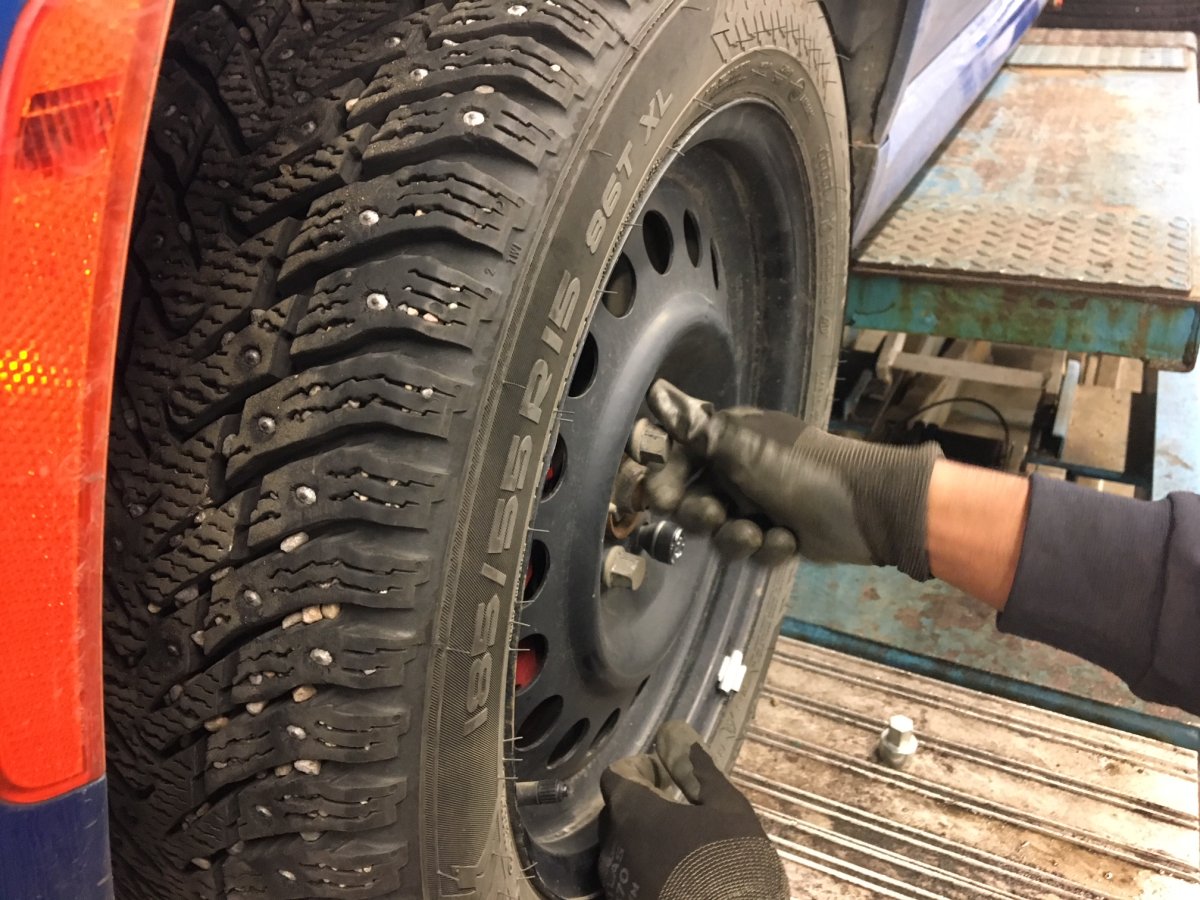Winter weather has arrived in much of Alberta, which means for many drivers it means it’s time to get those winter tires on. In fact, experts say you don’t have to wait for the white stuff.

“The winter tire switch can happen much earlier than when the snow is actually on the ground,” Dan Sandstra with Kal Tire said.
“Even if you have a fully devoted winter tire, by the time the average daytime temperatures are seven degrees celsius, you’re safe to get those winter tires on regardless of if there’s snow on the ground or not.”
READ MORE: 5 worst winter driving habits
According to tire experts, once the temperature drops below 7 C, all-season tires lose their grip and braking distance is extended. Winter tires have a softer rubber, more treads and deeper grooves for better traction on snow and ice.
“In actual winter conditions, what we really recommend is any tire that has the three peak mountain and snowflake on it, that is the ones that are considered having these severe winter service by Transportation Canada. So they really fall into two categories: either a fully devoted winter tire, which is designed for winter driving only, or the all-weather tire.”

Sandstra said all-weather tires are a year-round option if you don’t want to have the two separate sets of tires. If you do decide to stick with all-weather or all-seasons, make sure the tread depth is at least 6/32nds of an inch, or you’ll be sliding all winter long.
READ MORE: The difference between all-season and all-weather tires
Drivers who do want that extra control — and don’t want to change their tires themselves — may face a bit of a wait, now that snow has arrived. Sandstra said at this time of year, appointments start to book up at tire shops around Edmonton.
“We see a huge increase in business as people are reminded that it’s time to get their winter tires on, if they haven’t already, and as they figure out that their tires probably don’t have the traction they’re looking for in these type of road conditions.”
Automotive journalist Lorraine Sommerfield agrees that, for Alberta drivers, winter tires are highly recommended regardless of what type of vehicle you drive.
“Even though you may have an all-wheel drive vehicle, your brakes aren’t all-wheel drive. Everyone stops the same way,” Sommerfield told 770 CHQR.
“Four wheel drive or all-wheel drive will help you push off better, sending power to all four wheels, but it won’t help you stop any better.”
LISTEN: Lorraine Sommerfield joins The Morning News to talk about winter tires and driving in the winter
“The cheapest winter tires that are new are going to do better than all seasons in this mess.”
Winter tires are not mandatory in Alberta, however more drivers here appear to be using them. In 2014, about 45 per cent of drivers in the province used them, according to The Tire and Rubber Association of Canada. Two years later, the association said that number had jumped to 55 per cent of drivers.
The 2016 national average was 68 per cent. The association said winter tire utilization has nearly doubled since 1998, when about 35 per cent of Canadian drivers used them.
READ MORE: Winter tires important, but so are the right rims
“We don’t have any laws against studded tires at any time of the year and no mandatory winter tires at this time in Alberta, whereas provinces such as B.C., Ontario, Quebec — they have different provincial laws for that.”
Quebec is the only province in Canada requiring vehicles to be equipped with four snow tires from Dec. 15 to March 15, passing the law in 2007.
In British Columbia, winter tires are only required by law in certain mountainous regions from Oct. 1 to March 31.
READ MORE: Canadian Tire and other retailers have no policy on age of tires sold
But remember, whatever tire you use, it won’t do the job unless it has right air pressure. Tires lose air in cold weather and should be checked more often.
“Also change your wiper blades out to either all-weather or winter ones.” Sommerfield said. “They’re a different type of rubber.”
“All you can see is out your windshield. If there are streaks or misses, you can’t see.”
Manufacturers recommend windshield wiper blades be changed out twice a year.
And Sommerfield said some home-made solutions to clearing ice from a windshield could cause more harm than good.
“Don’t spray hot water on your windshields — you can crack your windshield.
“You can put a little rubbing alcohol, you can dilute it three-to-one with water, and spray that if you want to get sheets of ice off your windshield, but don’t pour warm or hot water on your windshield from your kettle.”
Other steps to prepare for winter include having a trustworthy battery, antifreeze and good oil.
— With files from Talia Ricci, Tony Tighe, David Boushy and Adam Toy, Global News
- Calgary fatal stabbing victim ‘gave himself’ to help those fleeing war in Ukraine
- Alberta introduces legislation to reduce high power-bill fee surcharge for Calgarians
- Innovative nursing education: Mannequins lead the way in Alberta
- Calgary police looking for suspect in March southeast hotel homicide




Comments